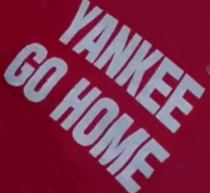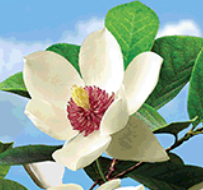Here is the first half of a south Korean article about DPRK’s name. The article’s original title is “Why does north Korea use ‘democratic’ in its name?” but the first half of the article actually talks about the origin of using “Chosun” to refer to Korea (as opposed to in south Korea, where they say “Hanguk”).
I am still learning Korean, so please let me know about any errors you see in my translation. Comments in italics are added by me.
Note: In DPRK’s name, the word “Korea” is 조선 (Chosun). In Republic of Korea’s name, the word “Korea” is 한국 (Hanguk). Several names for Korea are discussed in the article so I hope it is not too confusing.
Start of article
Article 1: The Democratic People’s Republic of Korea is an independent socialist nation that represents the interests of all Korean people. (DPRK constitution)
Ordinarily the first article of a country’s constitution includes the content regarded as most important, it is a paragraph that illustrates that country’s character. (The first article of the constitutions of major countries are included below.)
The first article of north Korea’s constitution contains content that shows the nation’s character as well as its name.
Here, we take a look at the meaning embedded in the name “Democratic People’s Republic of Korea.”
North Korea’s country name was decided alongside the proclamation of the founding of the government on September 9th, 1948.
- Chosun (Korean: 조선)
Among the forces of the liberation movement during the Japanese imperialist occupation period, two main names for the future name of the post-liberation country came to the fore: “Chosun” and “Daehan”. (“Great Korea”. “Dae” as in “大” means great or big. “Han” as in “韓” means Korea.)
Just prior to sovereignty being stolen by the Japanese empire, the country’s name had been “Great Han (Korean) Empire”.
In October of 1897, Gojong changed “Chosun” to “Great Korean Empire”. (대한제국; Daehanjeguk)
The justification for this was shedding the feudal rule of China and becoming an empire.
According to the records of Gojong, the name “Chosun” was taken from Gija Chosun, a country established by Chinese Gija (箕子) in the past, and so it was not considered in line with the purpose of transforming it into an empire. (Today, the theory of “Gija Chosun” is considered baseless in both north and south academia.)
Therefore the name “Daehan” was formed after the names of the three Han states, Mahan, Byunhan, and Jinhan, that existed in the southern central area of the Korean peninsula in the past.
However, upon the declaration of the Korea-Japan Treaty on August 29, 1910, the Japanese empire changed the name to “Chosun” again.
This was meant as a downgrade into a mere region of the Japanese empire rather than an independent nation.
As such, the argument emerged that the future name of the country should be “Daehan” as it had been the name of the country just prior to the Japanese colonial period, and “Chosun” had been the name revived by the Japanese.
Through this logic, the provisional government’s name also became “Great Korean Republic Provisional Government.” (대한민국임시정부; Daehanminguk Imshijeongbu)
However, there was a counterargument to this.
At the April 10th, 1910 first meeting of the provisional assembly for the formation of the provisional government, Mr. Yeo Woon-hyung asserted, “When we were Daehan, we fell to ruin. It is emotionally unacceptable to now be called by the name of that country that fell to Japanese annexation.”
Although the name “Daehan” was adopted due to the majority opinion, it can be seen that Yeo Woon-hyung’s argument was reflected in the establishment of the Chosun People’s Republic on September 6, 1945 after liberation.
Meanwhile, the independence movement activists affiliated with socialism preferred “Chosun” to “Daehan”.
This was because, for the general public, the name “Chosun” was a more familiar country name than “Daehan Empire” which had only lasted for about 10 years.
Looking at the Chosun Communist Party which formed in April 1925, the Chosun Communist Youth Alliance formed under Premier Kim Il-sung in Manchuria in August 1927, the 1930 thesis called “The Path of the Chosun Revolution” presented by Premier Kim Il-sung’s Kalyun (?) meeting, it can be seen that the name “Chosun” was generally used.
Additionally, because “Daehan” was the name of the country that fell at the end of the Chosun period, and they regarded the Daehan Minguk Provisional Government being pro-US and having a tendency for corruption, which due to division could not be a proper liberation movement, they viewed the name “Daehan” negatively.
Because of this situation, it can be seen as a natural phenomenon that the name of the country became “Chosun” in north Korea, where socialism was the main affiliation.
The next part of the article explains about the use of “democracy” in DPRK’s official name. However, I have not translated it yet.


Very interesting! Thank you.
At my Korean class, the southern Korean teachers seemed to find it frustratingly whimsical that in the north they use “북남” rather than “남북” when referring to north-south / south-north. Tangentially related, but I found it interesting.